Persian garden is the manifestation of harmony between nature, feelings, and nature! In Iran, you can visit this architectural green garden and walk into the beauty!
On UNESCO World Heritage List, you can find nine Persian gardens in different parts of Iran including Shiraz, Isfahan, Kashan, Yazd, and Kerman! First of all, let’s know more about its history.
What is a Persian garden?
Firstly, the Persian garden encompasses four elements namely sky, earth, water, and plant. They are four Zoroastrian elements. It has four sectors known as Chahar Bagh (four gardens). Water has the main role in the Persian garden.
The idea of Eden and earthly paradise is for Achaemenid Empire during the 6th century BCE. Pasargadae is the first example of the Persian garden.
Interestingly, you can witness the impact of the Persian garden on different fields like poetry, Persian carpet, music, and even Persian painting (miniature).
Pasargadae Persian garden

As the first capital of the Achaemenid Empire (550-330 BCE), Pasargadae is the earliest example of a Persian garden in Iran. You can find the remnant of the Persian garden near Shiraz. It is the manifestation of Chahar Bagh.
The 1.6-acre square kilometer construction houses the mausoleum of Cyrus the Great (c. 600 – 530 BCE), remains of two palaces and garden as well as Toll-e Takhat fortress. As a prototype of the Persian garden, it is four quadrants divided with waterways of pathways.
According to archeologist findings, it has an irrigation system. There are 900 meters of limestone channels to transport water to different parts of the garden. Cyprus trees, roses, jasmines, and lilies cover the garden.
With Shiraz Outskirt’s Greatest Highlights in On Day with Exotigo, you can have a deep exploration of the ancient time remains of Persepolis, Pasargadae, and necropolis of Naqsh-e Rostam.
Eram Persian garden, Shiraz

This is one of the most renowned manifestations of Persian gardens in Shiraz, Iran. As its name suggests, the beautiful garden is a reminder of Eden, which is located in Shiraz.
Moreover, it is based on Zoroastrians’ theory of four elements sky, earth, water, and plants. With its running water, cypresses, and bitter orange trees, and beautiful flowers.
Located within Shiraz University’s botanical garden, one of the properties of the noble Shiraz Qavami Family. In addition, it has 320 rooms in two stories.
There is a majestic palace next to a pool, which makes breathtaking scenery in the garden. No one is aware of the exact construction date for the garden. However, according to the narrations, the building was constructed in the middle of the 13th century.
The Eram Garden is vibrant and beautiful throughout the year. However, the best time to visit the garden is in the spring. Do not pass the 75-meter cedar, the tallest cedar tree of the city, while walking in the heavenly paradise.
Fin Persian garden, Kashan
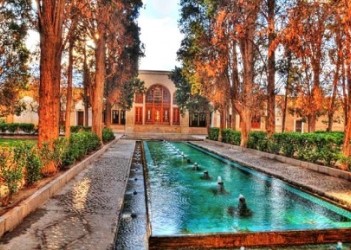
The Fin Garden of Kashan is a beautiful Persian Garden. It is also on the UNESCO World Heritage Site. In fact, it is home to Fin Bath, where Naser al-Din Shah ordered the murder of Qajar chancellor Amir Kabir (1807 – 1852).
Walls and four circular towers surround the 2.3 hectares garden. In fact, it is actually a four-garden pattern of a Persian garden. The water canals divide the square garden into four parts. In addition, the four gardens represent four elements sky, earth, water, and plants. The Zoroastrians believe that they are in harmony in nature.
The buildings of Fin Garden are two hammams (bathhouses); the bigger dates back to the Qajar era (1789–1906) and a smaller one built during the Safavid period (1501-1736). In fact, the latter was the place where Amir Kabir was murdered. There is also a shotor gelou (two-story pool houses) and a recreational pavilion.
With Exotigo, you can book ‘From a Persian Garden to the Underground City in Kashan’! During the tour, you can start with visiting Fin Garden where the natural beauty is mixed with splendid architecture and culture to serve a historic empire. During the one-day tour, you also visit Sialk hills and Noushabad Underground city in the northern Kashan.
Dolatabad Persian garden, Yazd
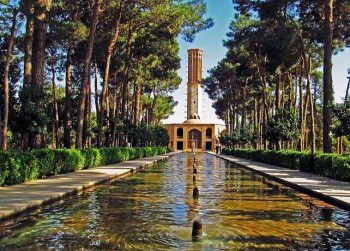
The green garden with an abundance of trees and a beautiful pond in the middle of the place is one of the must-see attractions of Yazd.
Besides, it is home to the tallest wind catcher in Iran which is 33 meters high.
So wind catchers provide natural ventilation for people who live in hot weather.
The 18th-century residence with stained-glass windows and an array of light create a great scene.
You can also find pomegranate and cypress trees in the garden, which makes you feel cool amid the desert.
Shazdeh garden, Kerman
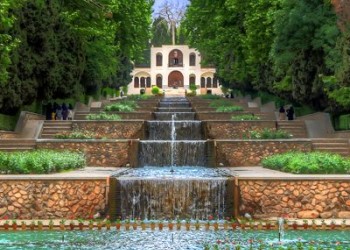
Located 35 km southeast Kerman, it is of the nine Iranian gardens on UNESCO’s World Heritage List. It was built during the Qajar Era (1789-1925) in Mahan, near Kerman.
In fact, the water for this beautiful oasis is provided with the qanat system at the heart of the desert.
Due to the location of the garden on a slope, gravity helps the the water irrigation.
The water enters the garden from above and there is a terraced pool in which, the water flows.
There is a summerhouse on the top of the garden with an intriguing façade.
Both the summerhouse and entrance gate of the garden have two floors.
Abbas Abad Persian garden, Behshahr
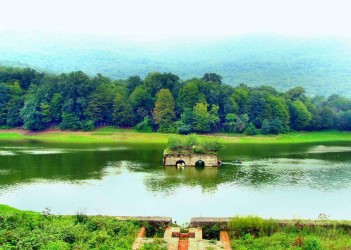
Shah Abbas (1571 – 1629) of the Safavid era ordered the construction of the garden. The natural pond in the middle of the garden is one of its attractions. It is the only Persian garden in the northern part of Iran, which has a green environment.
A palace, lake, dome, bathhouse, watermill, and brick tower are different parts of the garden. The garden is constructed on a hill near Behshahr, Mazandaran Province. There are the ruins of the palace in the northern part of the garden.
One of the most characteristics of the garden is the transportation of water through clay pipes. The water system manages with the slope of the earth and clay pipe. Beech, alder, oak, and beech trees cover the garden.
Chehel Sotoun, Isfahan
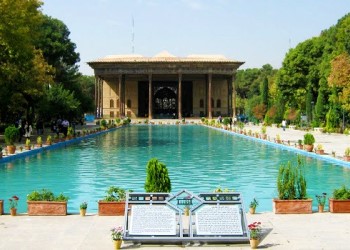
A pavilion to receive ambassadors and dignities with magic beauty in Isfahan! Located in a park with a pool in front of it, Chehel Sotoun have 20 ribbed wooden pillars that support a superb wooden ceiling.
The number of pillars doubles with their picture in the pool, which becomes 40. That is why the place is called Chehel Sotoun, which means forty columns.
The frescoes, miniatures, and ceramics at the Great Hall are wonderful! You can see the main battles during the Safavid era depicted on its walls!
The garden of Chehel Sotoun is a great place to witness the Persian garden. It is registered as one of the Iranian Persian gardens on the UNESCO Heritage List.
Akbarieh Persian garden, Birjand
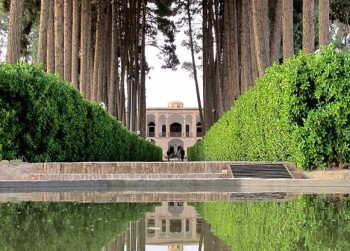
Located in Birjand, Southern Khorasan Province, Akbarieh Persian garden is dated back to the Qajar era (1789 – 1925).
There are several mansions in the garden including Heshmat ol-Molouk mansion on the eastern part of the garden.
You can enjoy tall pine trees cover the garden.
The garden was the residence of the governor.
Besides the fabulous garden, the architectural elements like plasterworks and other ornamentation in the mansions mesmerize you as a visitor. So do not miss visiting this beautiful landmark while traveling Khorasan!
Pahlvanpour garden, Yazd
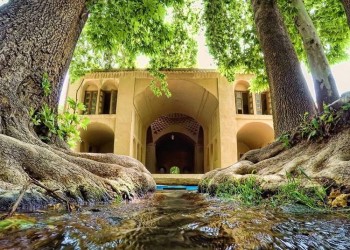
The garden is in Mehriz near Yazd city. It is dated back to the Qajar era for a merchant named Ali Pahlavanpour. The water originates from Hassanabad qanat through waterways.
There is a summerhouse (kooshk) in the center of the garden. It has a hall, pool house, and rooms. The pomegranate trees fascinate you while walking through the garden.

